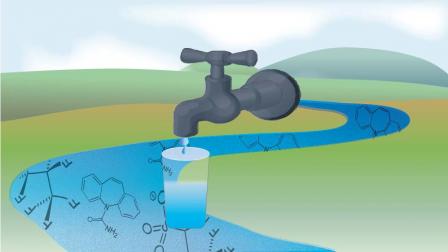Determining the prevalence of contaminants in treated and untreated drinking water
 Just 2.5 percent of the Earth’s water is fresh, making it crucial for humans to use water in smart, effective ways that preserve this precious resource. Water reuse has become an important part of the solution. In the United States, wastewater is treated and may then be discharged into surface water or ground water aquifers. There, natural processes including vaporization, dilution and reactions to sunlight may decrease the concentration of contaminants before the water is taken up for further treatment in drinking water facilities.
Just 2.5 percent of the Earth’s water is fresh, making it crucial for humans to use water in smart, effective ways that preserve this precious resource. Water reuse has become an important part of the solution. In the United States, wastewater is treated and may then be discharged into surface water or ground water aquifers. There, natural processes including vaporization, dilution and reactions to sunlight may decrease the concentration of contaminants before the water is taken up for further treatment in drinking water facilities.
Although wastewater and drinking water treatment is designed to remove pollutants, there is potential for trace levels of unregulated contaminants to be present in treated drinking water. Improvements in analytical instrumentation now allow scientists to measure these very low concentrations. There is an emerging awareness of the potential for these chemicals to be present in every portion of the water cycle — wastewater, surface water, groundwater and drinking water. To develop strategies for protecting human health, EPA needs to understand the prevalence of contaminants in both treated and untreated drinking water.
Scientists from EPA and the U.S. Geological Survey (USGS) are conducting a multi-phase study to determine the presence of contaminants of emerging concern in treated and untreated drinking water collected from approximately 30 drinking water treatment plants across the United States. Treatment plants chosen for this study receive waters impacted by a variety of waste sources including municipal waste, septic systems and livestock production. The contaminants being examined in the study are not regulated in drinking water by EPA and little is known about their prevalence. Samples are being analyzed for over 250 chemical and microbiological pollutants including a wide range of chemicals used in homes, businesses and industries.
Results of this EPA/USGS study are expected to provide important baseline information on the presence of contaminants in treated and untreated drinking water. The dataset is also expected to provide qualitative information on the efficacy of differing drinking water treatment technologies in removing contaminants. Research results will provide scientific data to inform the next generation of EPA drinking water safety standards.
